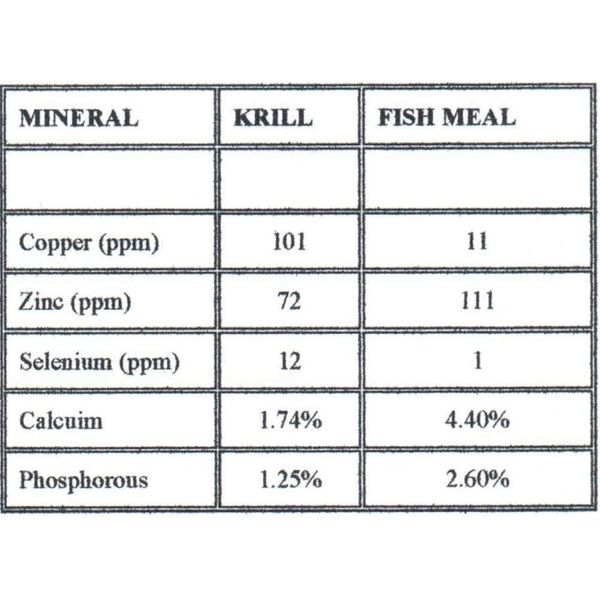

- Home
- Companies
- Krill Canada Corporation
- Articles
- Krill as a Source of Minerals - Case ...
Krill as a Source of Minerals - Case Study
Krill has a low content of ash making ideal for fresh water feeds. It is lower in content of phosphorus than other marine based meals such as shrimp or fish meal. Its calcium/phosphorus ratio is near to 1,5:1 which favors the absorption of both minerals, and it is significantly lower compared to fish or crustacean meals (3 or 4:1).
Krill is also a rich source of bioavailable minerals.
Minerals are nutrients that perform essential biological functions, both as enzymatic cofactors and as regulators of the immune system. The degree of bioavailability of minerals will have a significant effect on the physiological and immunological fitness of the animal. Organic minerals are more bioavailable than inorganic ones, since the first are chelated with amino acids, peptides or proteins that avoid antagonims in their active transport.
Of all the minerals present in krill, some deserve special mention. Copper, which in krill is concentrated at a rate ten times higher than in fish meal, is found chelated with resides of lysine and has an important role in the formation of collagen and in the integrity of fin and skin. Selenium, which is also more highly concentrated in krill than in fish meal, is an important player in the cellular antioxidant systems (glutathione system).

Comparative net absorption of chelated and inorganic trace minerals in channel catfish Ictalurus punctatus diets. Paripantanont and Lovell, 1997. Journal of the World Aquaculture Society, 28:62-67
Shows in the case of catfish that the net absorption of chelated minerals (copper proteinates, iron, manganesum, selenium, and zinc) is higher than that non-chelated forms (sulfates and selenates).
The effect of dietary modification on fin quality of Erwin strain rainbow trout. Barrows and Lellis. Review for U.S. fish and Wildlife Service, Bozeman fish Technology Center.
One of the most common failures in farmed fish is the low quality of fins. Barrows and his associates have been the first to demonstrate the relevance of feed quality in skin integrity. They have shown that the minerals in krill have a positive effect in the prevention of erosion in the fins of Trout. They suggest that the cause of this effect lies in the copper content in the krill, since this mineral is essential on the performance of enzymes specialized in the cross linking of collagen. Unlike mineral premixes are normally supplemented to feed where copper is added in the form of copper sulfate, copper in krill would be highly bioavaliable.
